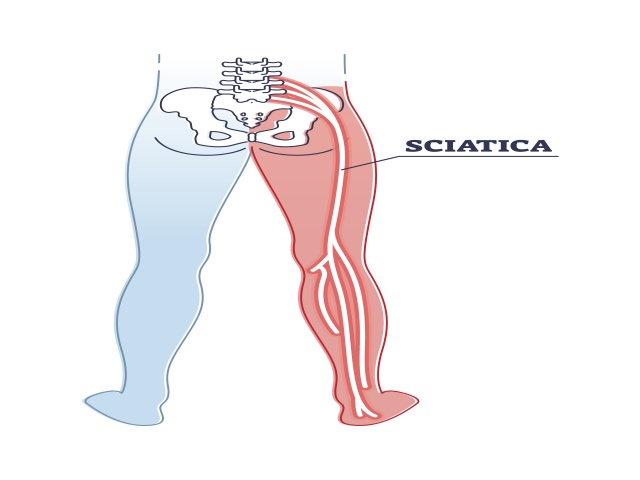We often find a lot of individuals around us with agonizing pain running down the thigh and leg and it can hamper their day-to-day activities as well. Recognizing this condition in time and initiating therapy is pivotal to its recovery.
What is Sciatica and what happens in this condition?

- The sciatic nerve originates from the lower back and travels all the way down from the hip to the back of the thigh and slightly inner thigh which further runs and divides into two towards the back of the knee joint and ends at the lower portion of the leg to the foot.
- It is a giant nerve of thumb size and runs through many muscles and bone lines. Any muscular spasm around the sciatica nerve or compression of the sciatica nerve at any level from the spine to the thigh can create radicular pain which may be very irritating and dull aching.
- You may get tingling, numbness, and pain along the line of the place of the nerve which can be mild to severe that affect the walking. In severe chronic cases, it may affect sitting and standing.
- In some cases, it can give irritation in lying down straight on the flat surface as it may compress the structure at the back of the body including the joints of the spine or it can aggravate the spasm of the muscles.
Also Read: What Gives Rise To Sciatica Pain?
Physiotherapy Management for Sciatica:
Most of the sciatica cases can be managed well by physiotherapists; only at a very severe stage, one needs to undergo surgical intervention. After surgery as well, one needs post-surgical management by a physiotherapist to get back to a normal lifestyle and occupation.
Here, we discuss conservative management in brief:
- Strengthening: endurance and muscle power increasing exercises can help to fight the weakness of the lower back and lower limbs structures which may help to withstand many muscle and nerve issues including sciatica as well.
- Nerve tissue mobilization: this technique is to be performed by a physiotherapist to mobilize and release the nerve to normalize the sciatic nerve issue from the root.
- Muscle release technique: this can be learned under a physiotherapist’s guidance as well as a physiotherapist may perform to release the spasm and tightness of any muscle related to the sciatic nerve. This can be learned using a tennis ball or even a towel and further performed at home by patients themselves.
- Lifestyle management: Many times the daily routine be at home or at the workplace can create trouble at the low back or any structure below the low back till the toes. One must consult a physiotherapist to rule out if any habit or trigger is there associated with the daily routine or work they do. Sometimes, “we need to get rid of the cause of pain than pain itself”
- Some vitamins like B12 or other micronutrients are associated with nerve issues. Consult and counsel for the same from a professional.
- Trigger point/ trigger band release: This is very effective to alleviate any muscular issues to release the pressure generated on the nerve and other structures.
- Manual mobilization: Bone mobilization techniques are used by a certified professional to release tension around joints and ligaments as well as tendons.
For further guidance please consult Dr. Janhvi Kathrani at jk.swasthya108@gmail.com



